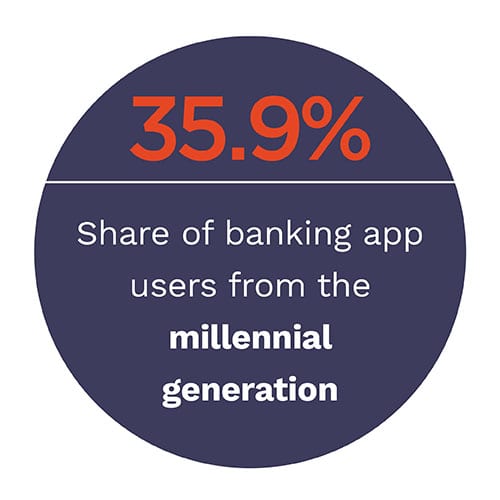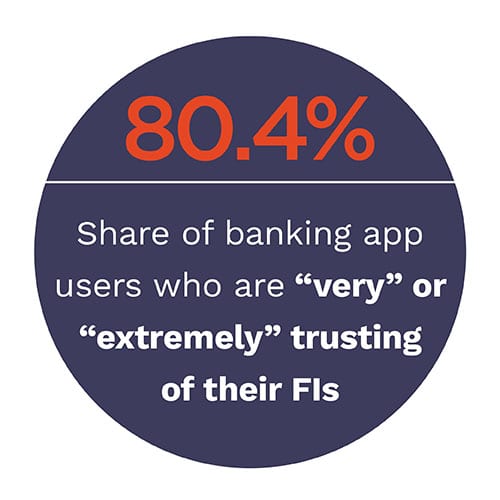
Mobile banking apps are designed to make digital banking more convenient for customers, yet 21.7 percent of consumers who use these apps are dissatisfied with them. This is true even for routine transactions, such as transferring money to friends and relatives or making retail  payments.
payments.
So what can financial institutions (FIs) do to improve their apps’ user experience (UX), and will making these changes help boost adoption and usage?
This was just the first of many questions PYMNTS examined in the Consumer-Centric Authentication Playbook: The Path To Banking App Adoption Edition, in collaboration with Entersekt. We surveyed 2,835 consumers about how they used their banking apps, what they liked about them and what they thought could be improved in order to determine which types of app features would best meet their customers’ demands.
Our research shows that consumers’ biggest issues with banking apps is their concern over how easy it is to make mistakes with them. Consumers who are dissatisfied with card controls, sending money to friends and relatives and paying bills are all more likely to cite this as their reason, with 24.1 percent, 25.5 percent and 28.9 percent saying it is too easy for mistakes to be made while using these functions, respectively.
Users can often be frustrated enough with their banking apps that they would often rather walk to their local branches. This is the case for 34.8 percent of consumers  who are dissatisfied with their apps’ account opening functionalities, for example. It says a lot about consumers’ frustration that they would prefer to just walk into local branches instead of performing the same tasks from the comfort of their homes.
who are dissatisfied with their apps’ account opening functionalities, for example. It says a lot about consumers’ frustration that they would prefer to just walk into local branches instead of performing the same tasks from the comfort of their homes.
Understanding why consumers are frustrated with their apps is one thing; Improving their UX is another. The Playbook seeks to provide a blueprint as to which features FIs must work to improve to boost user satisfaction and adoption.
To learn more about what consumers want from their banking apps, download the Playbook.